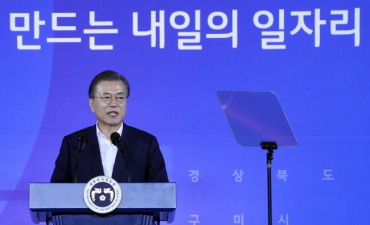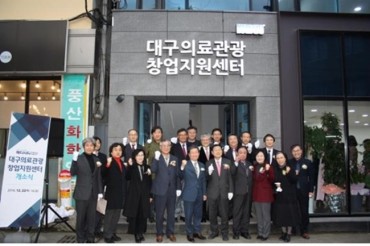
Samsung Electronics’ semiconductor factory in Taylor, Texas is under construction. (Image courtesy of Samsung Electronics)
SEOUL, Nov. 11 (Korea Bizwire) – South Korea directed 43% of its overseas investments to the United States last year, marking the highest proportion since 1988, as bilateral trade relations reached new heights.
The surge comes amid record trade surpluses with the U.S., where intermediate goods like raw materials and components account for half of South Korean exports.
With President-elect Donald Trump campaigning on promises of an American manufacturing renaissance, concerns are mounting about potential trade tensions. However, analysts suggest a closer examination of trade patterns reveals the two nations are good partners in global supply chains.
According to the Export-Import Bank of Korea, South Korean global investments have shown steady growth since Trump’s first term in 2017. Investment in the U.S. particularly accelerated under the Biden administration, nearly doubling to $27.93 billion in 2021 from around $15 billion during the Trump years.
This upward trend continued with $29.5 billion in 2022 and $28.04 billion in 2023, with $12.4 billion already invested through the second quarter of this year.
The U.S. share of South Korea’s global investments jumped from around 20% during the Trump administration to 36.3% in 2021 and 36.1% in 2022 under Biden, before reaching 43% last year.
This investment surge reflects South Korean companies’ enthusiastic response to U.S. policies aimed at sharing critical industrial supply chains with trusted allies. Notable examples include Samsung Electronics’ semiconductor factory in Taylor, Texas, SK Hynix’s AI memory advanced packaging facility in West Lafayette, Indiana, and LG Energy Solution’s battery production plant in Arizona.
“Korean investments in the U.S. are yielding positive results for both administrations’ priorities – Biden’s focus on advanced industries and climate change, as well as Trump’s emphasis on manufacturing strength and trade balance improvement,” said Do Won-bin, a senior researcher at the Korea International Trade Association (KITA).
As Korean high-tech manufacturers commit to major U.S. investments worth tens of billions of dollars, exports to the U.S. have risen significantly as well. U.S.-bound exports increased by 68.6%, from $68.61 billion in 2017 to $115.7 billion last year, setting new records each year since 2021.
Notably, intermediate goods have consistently represented over half of South Korean exports to the U.S., reaching 50.1% in 2023.
These include crucial components like automotive parts, semiconductors, batteries, displays, and steel materials – underlining South Korea’s vital role in supplying essential materials and components to American manufacturing industries.
Experts suggest that while a potential second Trump administration might increase trade pressures, South Korea should emphasize how both nations benefit from their economic security alliance. Despite America’s trade deficit with South Korea, the partnership provides mutual advantages.
“While equipment exports have increased due to Korean companies’ U.S. investments, exports of intermediate goods to purely American companies have also grown,” said Cho Sang-hyun, head of the International Trade and Commerce Institute at KITA.
“America’s manufacturing revival policies have positive implications for both countries, and we need to convince a potential second Trump administration that the U.S. and South Korea are good partners in advanced industry supply chains.”
M. H. Lee (mhlee@koreabizwire.com)






